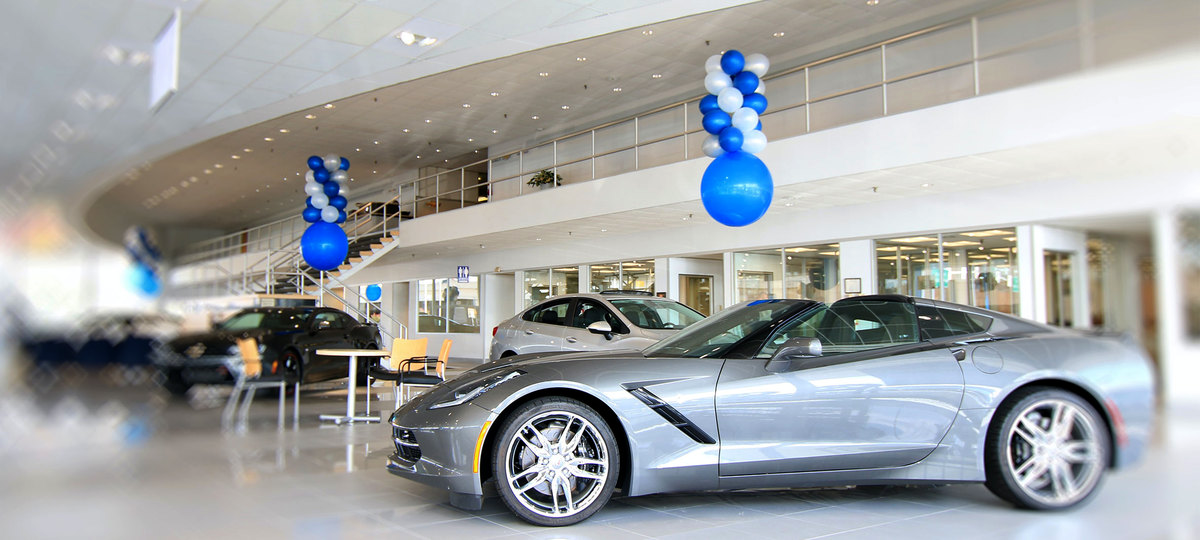
March 15, 2024
How to Improve Your Dealership’s BDC Experience

As inventory levels normalize and OEM incentives gradually return, promoting new vehicle sales growth. Despite high-interest rates still pushing against demand, S&P Global Mobility projects light vehicle sales to increase by 3% in 2024 based on early forecasts, setting the stage for a competitive market.
At the same time, customer buying habits have changed rapidly in the last few years. According to S&P Global Mobility’s latest Vehicle Buyer Journey Study, 65% of U.S. vehicle buyers now shop online or partially online – and 61% stated the option to shop and buy online influenced their purchase decisions.
To optimize the cost of their retail operations, brands are increasingly embracing digitalization. According to S&P Global Mobility, between 2%-5% cost savings are expected to result from retail transformation due to: lower incentives spend and higher gross profit per vehicle; reduced staffing due to simplified and digitized processes; and optimized inventory management with a significantly fewer demo cars and more build-to-order vehicles.
As OEMs put a greater emphasis on the retail transformation, the Business Development Center (BDC) has become increasingly important to dealership success. By effectively leveraging the BDC, dealerships can engage buyers across channels, meeting customers’ demands while maintaining a personal touch with prospective buyers.
What is the Role of a BDC?
The dealership’s Business Development Center (BDC) traditionally focuses on setting up sales appointments for new sales and service leads by identifying, engaging, and securing potential customers.
While an automotive dealership’s BDC has long been pivotal in the sales process, dealers are increasingly leveraging the department to bolster other crucial operations, including supporting pre-owned vehicle acquisitions, service-to-sales initiatives, and customer retention efforts.
To establish a top-tier Business Development Center, car dealerships need the right support for their strategy, encompassing tools, training, structure and process.
Setting the Stage: The Transformation of Digital Retail
The retail mantra of “right product, right price, right place” has proven to be especially true lately as vehicle prices and rates remain high. While customers have grown accustomed to waiting for the right product at the right price, the right place is no longer restricted to just their local market – or even the physical dealership.
For some time now, car buyers have begun the buying process by researching and comparing vehicles online. However, having online comparison tools is no longer enough. The new differentiator is the ability to complete parts of the lengthy transaction process online, which used to be entirely in-person at the dealership.
This convenience is no longer just a “nice-to-have” feature. Consumers are willing to travel further and even engage with new dealerships to get the desired digital experience. In fact, in S&P Global Mobility’s Vehicle Buyer Journey Study, a stunning 60% of consumers surveyed reported that they drove further than their nearest dealer due to the availability of online channels.
Tailoring Your BDC to Be Effective and Efficient
In the past, working in an automotive BDC typically involved prioritizing the quantity of leads by making as many outbound calls as possible, often overlooking lead quality in favor of sheer volume.
But with dealers facing increasingly tight margins and diminished customer loyalty, dealerships are now relying on their BDCs to perform more strategic roles throughout the sales process, including supporting service-to-sales and retention efforts.
Given the department’s ability to support multiple dealership elements at once, there is no single best approach to building an effective and efficient BDC. The most successful dealership BDCs are the ones who tailor their strategy to meet their specific needs, leveraging the BDC’s expertise in bridging the gaps between dealers’ online and in-store operations to address any shortcomings in the dealership’s sales process.
To define your strategy, start by assessing your current BDC to identify areas of opportunity. Ask questions such as:
● Where does your BDC gain knowledge on new products and vehicles?
● How can the hand-off between the BDC and sales be more streamlined?
● What size team do you need to build a robust customer experience?
● Is your BDC regularly assessing any gaps in your sales process?
How to Staff Your BDC
Regularly analyzing a BDC’s process is important to proactively detect and address any pain points. While there is no one-size-fits-all approach, most commonly, the BDC’s primary objective is to deliver qualified prospects to the sales team for closing, rather than closing the sale themselves.
As the initial point of contact between a potential buyer and a dealership’s sales team, the BDC experience can greatly impact the overall buyer experience. Effective BDCs can greatly contribute to overall customer satisfaction with their dealership experience.
Starting from this first touchpoint, BDC managers must ensure that their team has access to as much information and insights as possible regarding their prospects. This is vital to support informative and data-driven conversations with customers.
How to Manage Your BDC
BDCs can serve as powerful tools to accelerate the prospect’s decision-making process with the right structure, staffing and management. To effectively manage their BDC, dealership leaders need to start at the top.
When choosing managers, it’s crucial to identify team members who can balance sales targets with a strong commitment to providing excellent customer service and experiences to grow customer relationships.
While having a sales-oriented individual oversee day-to-day operations of the BDC can be useful, the focus on customer experience means candidates with diverse backgrounds and experience in managing non-sales environments should also be considered.
How to Structure Your BDC
The structure of a BDC, much like its strategy, should be customized to suit each dealership’s unique needs. Whether leads are worked by the BDC or passed on to the sales department for closing, a well-designed BDC structure can support numerous revenue-generating operations to support sales, service, customer retention and more.
To ensure the team can handle lead volume, customer service needs, and maintain responsiveness during peak hours, staffing plays a crucial role. The optimal number of BDC agents will depend on the dealership’s size and specific requirements.
Beyond proper staffing, for the BDC to operate smoothly and efficiently, it must be well-integrated with the rest of the dealership including insight into the sales team’s goals and real-time access to customer insights. To further support a seamless sales process, dealers need to establish clear communication channels and protocols for lead handoffs, appointment scheduling and customer feedback.
Understanding the Customer’s Journey with Data
The success of a dealership’s BDC depends on its ability to understand where customers are in their buying journey and tailor their communication accordingly.
By leveraging data-driven insights to identify and proactively engage prospects, whether it be service-to-sales leads, pre-owned acquisition opportunities or loyalty customers at risk of defection, the dealership BDC can help kickstart the buying journey.
For example, many dealers task their BDC to identify and proactively engage potential sales prospects among upcoming service appointments such as those with expired warranties or approaching the end of their lease. This also enables BDCs to identify potential trade-in or buy-back opportunities, such as service customers driving in-demand vehicles or those approaching the end of their lease or finance term.
Leveraging Mastermind’s advanced analytics and predictive modeling, dealers can gain a deeper understanding of their customers’ behaviors, preferences and likelihood to purchase. This data-driven approach empowers BDCs to proactively identify and engage prospective buyers, as well as develop targeted marketing strategies personalized to the needs of each prospect.
—-
In light of ongoing inventory shortages and diminishing customer loyalty, proactive dealers are finding new ways to leverage the dealership BDC beyond supporting the sales department. Serving as a natural link between a dealer’s online and in-person buying experiences, the dealership BDC is instrumental in:
– Sales
– Service
– Loyalty
– Pre-owned acquisition efforts
But for dealers to reimagine their BDCs, they need the right tools, teams and processes.
In today’s competitive automotive retail market, a data-driven approach to understanding the customer’s journey is essential for a dealership’s BDC to be successful.
By leveraging advanced analytics and personalized communication strategies, BDCs can build stronger relationships with their customers, increase loyalty and ultimately drive more sales and revenue for the dealership.
Optimize Your Automotive BDC with Mastermind
Interested in learning how automotiveMastermind can help your BDC department effectively communicate with potential car buyers? Contact us for a free demo.


